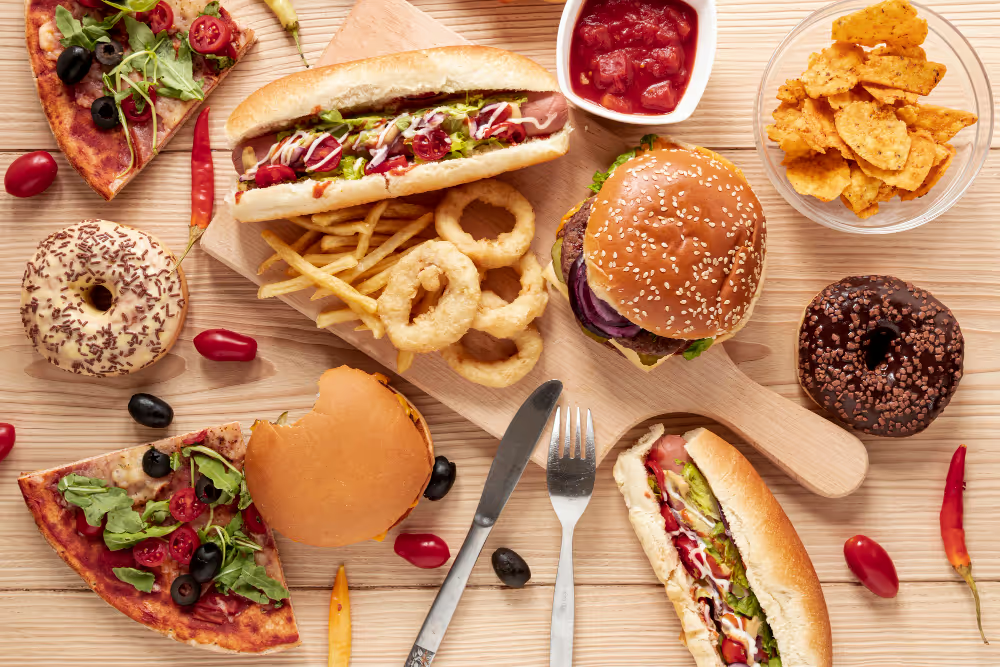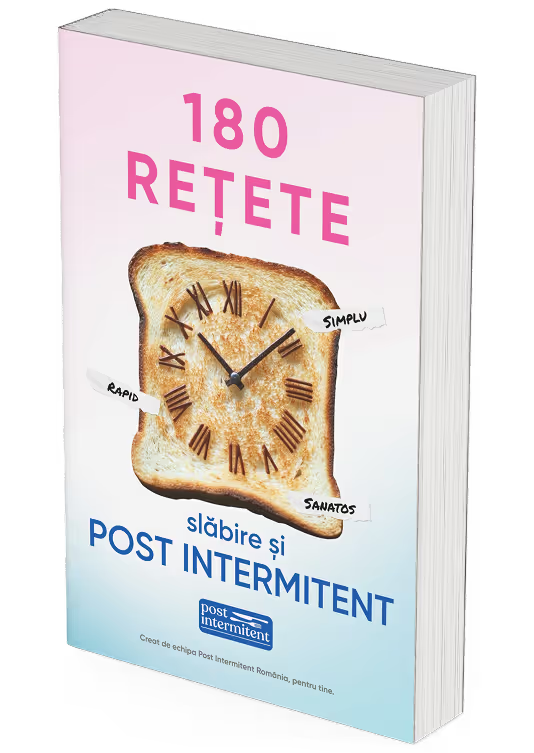Below you will discover the mechanisms by which junk food “tricks” the body, what recent studies say and how you can protect yourself.
1. Caloric density vs. volume and the feeling of satiety
A controlled study shows that ultra-processed diets cause excessive energy consumption compared to diets based on minimally processed foods, even though the taste and pleasure of consumption are perceived similarly.
Why? Junk foods have high caloric density (high calories per gram), and the body's internal mechanisms — which regulate hunger and satiety based on volume, fiber and other sensors — are buried beneath the concentrated caloric avalanche.
In the 2019 controlled experiment, participants who consumed ultra-processed foods consumed on average ≈ 500 kcal more per dayand they have gained weight.
2. Impact on metabolism and insulin resistance
High consumption of ultra-processed foods is associated with higher risk of metabolic syndrome, obesity, insulin resistance and cardiovascular disease.
A narrative review of 43 studies showed that in 37 of them, exposure to these foods was linked to at least one adverse effect (weight gain, diabetes, dyslipidemia).
Another relevant study shows that ultra-processed products act as “metabolic disruptors”: they can reduce mitochondrial efficiency, promote the accumulation of visceral fat and promote chronic inflammation.
3. Changes in the brain and eating behavior
Junk food affects not only the body, but also the brain. A study published in Natuurdemonstrated that just 5 days of heavy junk food consumption can induce changes in brain activity related to reward and craving.
This means you may feel more tempted, more alert to advertisements, and more likely to return to these foods — creating a cycle that's hard to break.
4. Chemicals, additives and “hidden contaminants”

Ultra-processed foods include additives, emulsifiers, preservatives, synthetic flavors, dyes, and other substances that can disrupt metabolism, intestinal flora, and hormonal system.
A recent NIH study identified biological markers (metabolites) in blood and urine that can indicate the amount of ultra-processed foods eaten — suggesting that their effects are not only speculative, but “reflected” in objective chemical changes.
Moreover, an international study shows that an increased (10% higher than average) consumption of ultra-processed foods is associated with a risk of premature deathincreased by 3% before the age of 75.
5. The “mirror” effects of junk food on body systems

The study “Association between junk food consumption and mental health” has shown that high consumption of junk food increases the risk of depression and psychological stress.
How the body “tricks” you in stages when you eat #fastfood — typical scenario
- Eat processed snack (chips, stick, etc.)
- You have an intense taste explosion — sugar + salt + fat — that stimulates the “pleasure centers”
- Small volume, high calories → do not get enough
- The body asks for “one more boost”, cravings — resort to other junk foods
- Metabolic effect: fluctuating blood glucose, increased insulin, fat storage (especially visceral)
- Meanwhile, inflammation increases, the microbiome unbalances, dysfunctional appetite sets in
🔁 Strategies to protect yourself (and “disable the game”)
- Choose foods with volume + fiber— vegetables, legumes, quality proteins
- Regulates the taste— gradually reduce the sweetness and salt so as not to “move” on other toxins
- Beware of advertising and aggressive packaging— these mechanisms are part of the “manipulation mechanism”
- Adopts fasting windows/metabolic interventions— this way the body has a chance to “reset”
- Food education and awareness— understand what the product contains before eating
📚 Sources:
- Cell Stem Cell JournalProlonged fasting reduces IGF-1/PKA signaling and promotes multi-system regeneration.
- University of Southern California (USC)“The Fasting-Mimicking Diet reduces insulin resistance, liver fat, immune system aging, and biological age.”
- Medical News Today“Fasting for three days can regenerate the entire immune system.”
- Natur Neuroscience“Ultra-processed food consumption affects structural integrity of reward circuits.”
- Harvard Health Publishing“Why your brain loves junk food (and what you can do about it).”
- Frontiers in Nutrition— “Addictive properties of ultra-processed foods: A systematic review.”
Ultra-processed foods are industrial products that contain additives, flavor enhancers, hydrogenated fats and refined sugars. As a rule, they go through several stages of processing, losing fiber, vitamins and natural minerals. Examples: chips, carbonated drinks, colored cereals, packaged sausages or sweets.
Because these products are designed specifically to activate the pleasure circuit in the brain. The combination of sugar, fat and salt stimulates the release of dopamine — the same neurotransmitter associated with rewards and addictions. Over time, the brain “wants” more and more for the same pleasure.
No, balance matters. Your body can handle an occasional treat, especially if 80— 90% of your diet is based on real, unprocessed food. The problem arises when “once in a while” becomes “daily” — then the metabolism, liver and microbiome begin to suffer silently.









.svg.avif)
































.svg)
